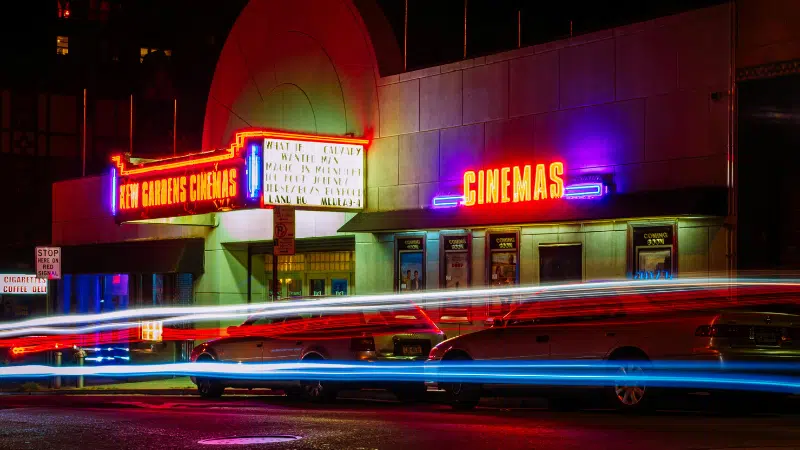Whenever you hear music on a TV show, in a film or in a commercial, that music has been licensed. (aka “synched“) To have your music featured on screen, there are steps you should take to get your music ready for licensing. In this post, we’ll talk about how to prepare your music for sync licensing and more…
How To Prepare Your Music For Sync Licensing
Instrumental Mixes
If your music has vocals, make sure you have fully mastered instrumental versions that match the vocal mix. Even if your song is seemingly perfect for a placement, the lyrics might not be on topic or could get in the way of the dialogue. In addition, if your music contains profanity, you should also have alternate “clean” versions for television.
If your music is full of curse words we’re not judging you, but the FCC definitely will.
Know Your Splits
It’s important to make sure you know all of the ownership splits for publishing and masters, and that they’re well documented. When licensing a song, you’ll be asked who owns what to share. You definitely don’t want to say that you don’t know. It’s a surefire way to lose a license.
It’s much smarter to have all of this worked out ahead of time, not when it’s the deciding factor in how much you and your collaborators will make from a placement. It’s unprofessional and can get messy.
Register with a PRO
Once you figure out who owns what, it’s a good idea to register with a Performing Rights Organization like ASCAP, BMI, or SESAC. This will allow you to collect performance royalties from uses on radio, TV, and licensed streaming platforms. If you aren’t registered, you’ll miss out on these royalties. If you don’t want to deal with this, a good idea might be to seek out a publishing administration company that can help you manage your catalog and collect your royalties worldwide.
PROs do charge a sign-up fee. BMI has a $75 fee for writer membership. ASCAP charges $50 for publisher setup and $0 for writers. SESAC is invite-only. Typically, these fees vary depending on who you choose, as well as if you’re an independent artist, publisher, or corporation. Before you start stressing, the process is very simple and straightforward. As an independent artist, you should expect to pay a fee on the lower end of the range given above. And if you’re a Symphonic client, we can help you through our Publishing Admin service.
To learn everything you need to know about PROs, check out this post.
——
🍬 Feed your brain…🍬
How To Legally Release A Cover Song and Earn Royalties
How To Know If You’re Eligible To Collect Publishing Royalties
5 Things You Should Know About YouTube Royalties
Introducing Symphonic’s New AI Mastering Tool
——
Check Your Samples
This typically only applies to Pop, EDM, and Hip-Hop, but if you’re someone who regularly uses samples in your tracks, listen up: If your music contains copyrighted samples, you cannot license it for sync without permission from the sample’s label and publisher.
Plus, they also take a cut. It doesn’t matter how short or insignificant the sample is or how much you mashed it up in the mix. There’s a nerd on the internet that will figure it out. At the end of the day, if a music expert can prove in court that you’re using any part of a song that belongs to someone else, you’re toast.
Period.
It’s not a bad idea to create an alternate mix for licensing that contains royalty-free or re-recorded samples. There are more legal options for samples available to artists and producers now than at any other time in history.
Master Your Metadata
Releasing or licensing music without accurate metadata is like publishing a book with a blank cover. Metadata is the world’s way of knowing everything about your music that’s not in the recording.
For licensing purposes, the more information you give the better. You want to give whoever is making the decision to license your track all the information they need about your song. Be sure to include the writer(s), label info, the release year, lyrics, and contact information for licensing.
Last, but not least…
Sync licensing isn’t as simple as just submitting your tracks somewhere and waiting for opportunities to roll in. It’s a relationship-driven industry, and that’s where working with a sync rep can make all the difference. Sync reps have the connections and expertise needed to pitch your music directly to music supervisors, aka the people who are actively looking for tracks for TV shows, movies, and ads. Without those established relationships, it’s almost impossible to get noticed by supervisors. There’s a near-zero chance they’d even listen to a random submission from an artist they’ve never heard of.
That said, there’s a lot you need to take care of before you submit anything for sync licensing… but that’s why companies like Bodega Sync exist. As a Symphonic Distribution client, you have the opportunity to apply for representation by our in-house sync licensing division, Bodega Sync. If accepted, Bodega will help place your music by pitching to music supervisors and advertising agencies, negotiating licensing deals, and completing all the paperwork to make sure you get paid properly. // Click Here to Apply for Sync Representation with Bodega Sync.
Good luck!




One Comment
Comments are closed.